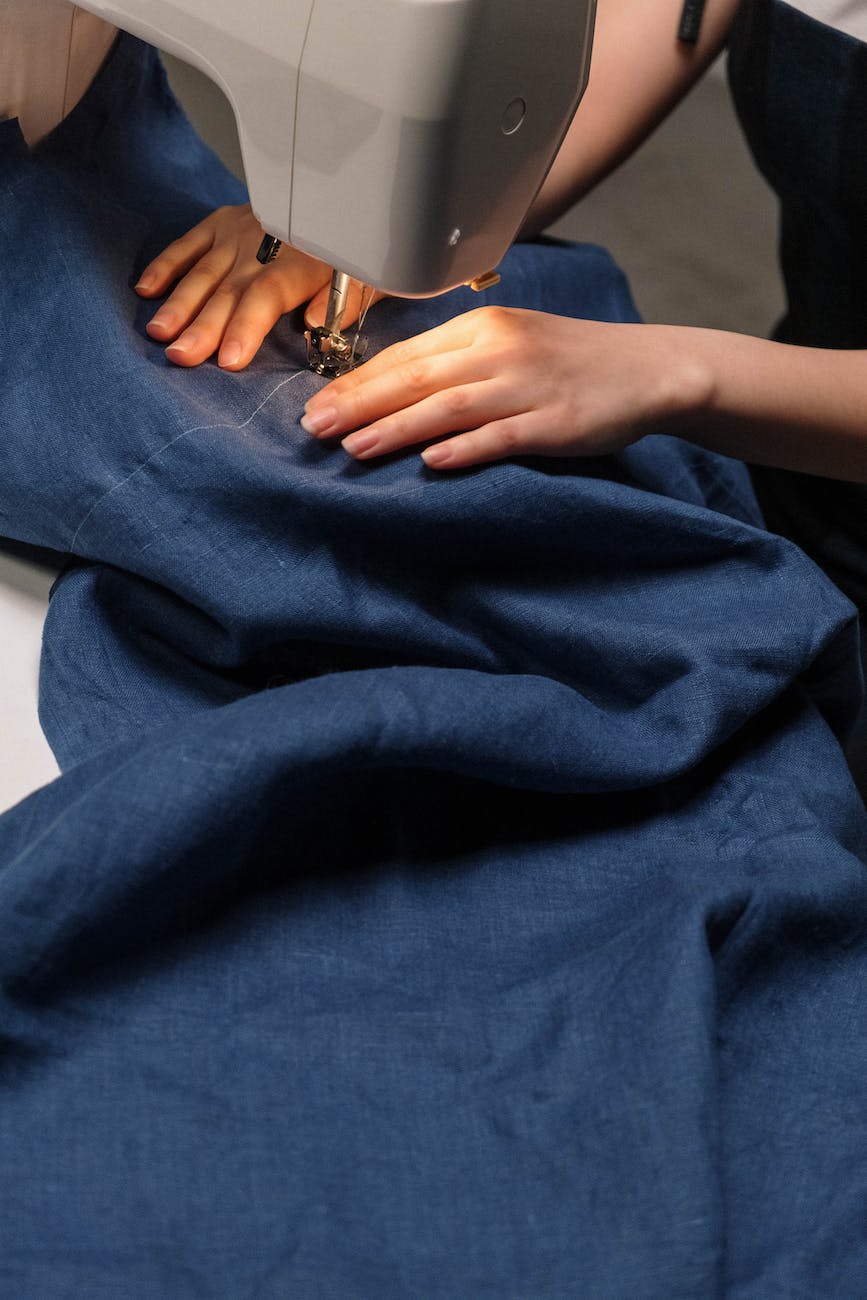sewing with denim: tips for tackling thick fabrics
Denim is a versatile and durable fabric that can be used to sew a variety of garments and home décor items. However, denim is also a thick and sturdy fabric, which means that it requires some special handling when sewing. Here are a few tips for sewing with denim:
- Use a sharp needle and thread. A sharp needle will help to prevent the denim from fraying, and a strong thread will help to hold the stitches in place.
- Use a walking foot. A walking foot is a special type of sewing foot that helps to feed the denim through the machine evenly. This is especially important when sewing thick or multiple layers of denim.
- Use a longer stitch length. A longer stitch length will help to prevent the denim from puckering.
- Backstitch at the beginning and end of each seam. Backstitching helps to secure the stitches and prevent them from coming undone.
- Use a stabilizer. A stabilizer is a piece of fabric that is placed between the denim and the sewing machine. This helps to prevent the denim from stretching or distorting.
- Prewash the denim before you start sewing. This will help to shrink the denim and prevent it from shrinking after it is sewn.
- Iron the denim before you start sewing. This will help to flatten the denim and make it easier to sew.
By following these tips, you can sew with denim like a pro!
Here are some additional tips for sewing with denim:
- Choose the right type of denim for your project. There are many different types of denim available, so it is important to choose the type that is right for your project.
- Consider the weight of the denim when choosing a needle and thread. A heavier needle and thread will be needed for heavier denim.
- If you are sewing with multiple layers of denim, you may need to use a heavier weight stabilizer.
- Be patient when sewing with denim. It is a thick fabric, so it takes a little more time to sew.
- Have fun! Sewing with denim can be a lot of fun, so enjoy the process.
Selecting Denim Fabric
- Prewash to preshrink and soften. Denim may bleed indigo at first. Wash separately.
- Opt for medium weight 9-12 oz. denim rather than super lightweight or rigid types until confident sewing it.
- Tighter weaves withstand stress. Avoid loose/slubby denims prone to distortion.
- Darker indigo takes stitching lines better than pale denim where marks may shadow.
- Soften stiff denim through washing or using denim softener additive in the machine.
Helpful Tools for Sewing Denim
- Denim or leather needles easily pierce dense fibers
- Topstitching needles have an elongated eye to accommodate thicker threads
- Use polyester or topstitching thread to add strength against friction
- Wash away wonder tape helps stabilize denim when basting
- Extra long straight pins anchor multiple fabric layers securely
Best Practices for Constructing Denim Projects
- Lengthen stitch length to 2.5-3 mm to allow needle to penetrate tightly woven yarns
- Use a jeans presser foot to avoid fabric slipping and shifting under pressure
- Reduce presser foot pressure so movement isn’t restricted
- Cut notches outward rather than inward to avoid fraying along edges
- Grade/trim seam allowances to reduce bulk in enclosed seams
- Press frequently using high steam to set seams – avoid pulling or stretching
- Spread seams flat as you topstitch to prevent impressions from thick layers
Achieving Topstitching on Denim
- Engage topfeed mechanism or use a roller foot to feed fabric evenly
- Lengthen straight stitch to 4mm for visible topstitching
- Use upholstery thread in top or bobbin for strong reinforcement
- Edgestitch dangerously close to fold, seams, and edges for clean finish
- Use stitch length 5-6 for bold high-contrast topstitching accents
Denim is a versatile fabric that can be used to create a variety of garments and home décor items. With the right adjustments, denim can be sewn at home with great results.
Here are a few tips for achieving durable creations with denim:
- Use the right tools and techniques. As mentioned in the article, using a sharp needle and thread, a walking foot, and a longer stitch length will help to prevent the denim from fraying or puckering. Backstitching at the beginning and end of each seam will also help to secure the stitches.
- Prewash the denim before you start sewing. This will help to shrink the denim and prevent it from shrinking after it is sewn.
- Iron the denim before you start sewing. This will help to flatten the denim and make it easier to sew.
- Be patient when sewing with denim. It is a thick fabric, so it takes a little more time to sew.
- Have fun! Sewing with denim can be a lot of fun, so enjoy the process.
Here are some additional tips for embellishing blank denim uniquely:
- Use embroidery to add detail and interest.
- Use appliqués to add patches or designs.
- Use fabric paint to add color or patterns.
- Use studs, rivets, or other embellishments to add a bit of edge.
With a little creativity and effort, you can create unique and durable denim creations that will last for years to come.
